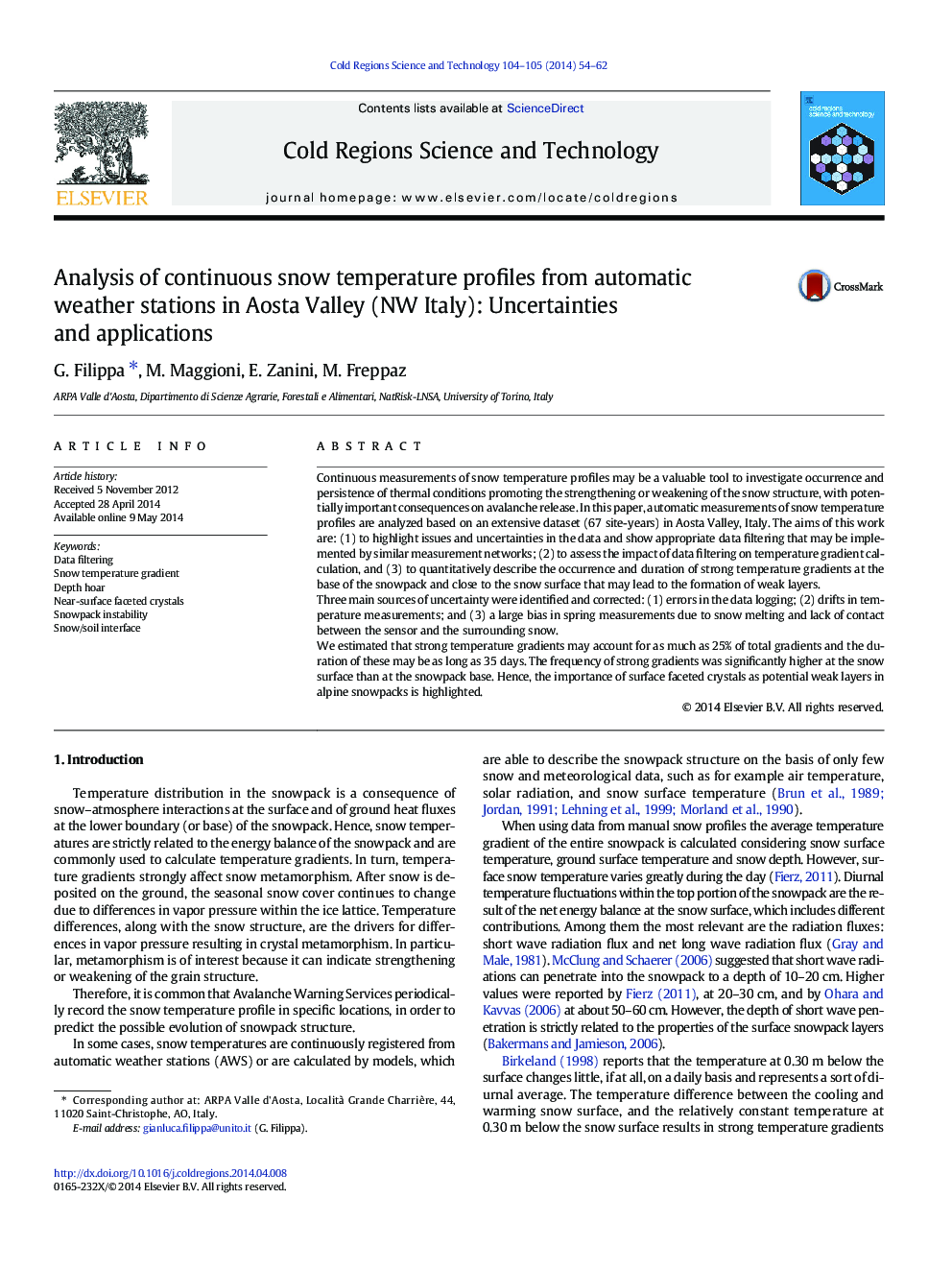| کد مقاله | کد نشریه | سال انتشار | مقاله انگلیسی | نسخه تمام متن |
|---|---|---|---|---|
| 6426987 | 1634458 | 2014 | 9 صفحه PDF | دانلود رایگان |

- We report an extensive analysis (67 site-years) of temperature profiles in snowpack.
- Uncertainties related the thermal gradient calculation are discussed.
- Appropriate data filtering is proposed, that may be extended to similar datasets.
- The effect of filters on temperature gradient calculations is discussed.
- A description of occurrence and duration of partial thermal gradients is presented
Continuous measurements of snow temperature profiles may be a valuable tool to investigate occurrence and persistence of thermal conditions promoting the strengthening or weakening of the snow structure, with potentially important consequences on avalanche release. In this paper, automatic measurements of snow temperature profiles are analyzed based on an extensive dataset (67Â site-years) in Aosta Valley, Italy. The aims of this work are: (1) to highlight issues and uncertainties in the data and show appropriate data filtering that may be implemented by similar measurement networks; (2) to assess the impact of data filtering on temperature gradient calculation, and (3) to quantitatively describe the occurrence and duration of strong temperature gradients at the base of the snowpack and close to the snow surface that may lead to the formation of weak layers.Three main sources of uncertainty were identified and corrected: (1) errors in the data logging; (2) drifts in temperature measurements; and (3) a large bias in spring measurements due to snow melting and lack of contact between the sensor and the surrounding snow.We estimated that strong temperature gradients may account for as much as 25% of total gradients and the duration of these may be as long as 35Â days. The frequency of strong gradients was significantly higher at the snow surface than at the snowpack base. Hence, the importance of surface faceted crystals as potential weak layers in alpine snowpacks is highlighted.
Journal: Cold Regions Science and Technology - Volumes 104â105, AugustâSeptember 2014, Pages 54-62